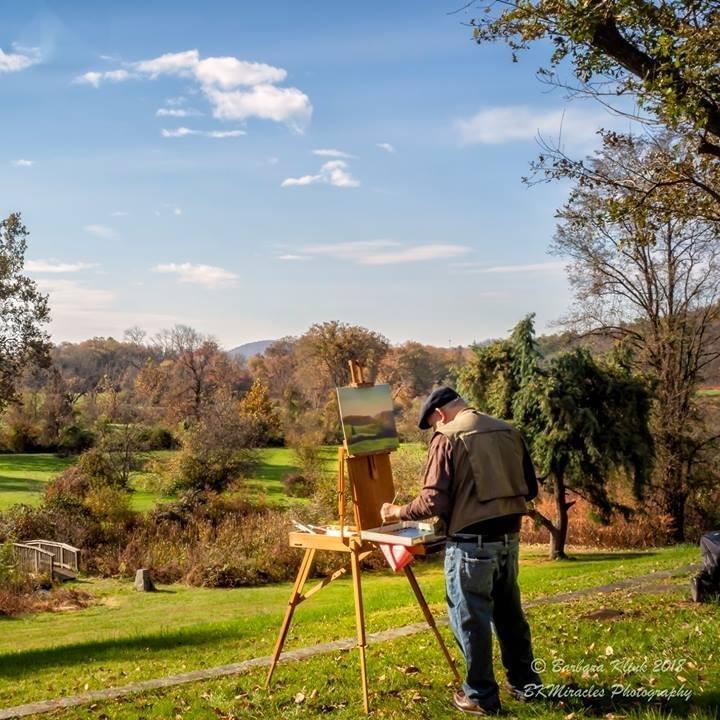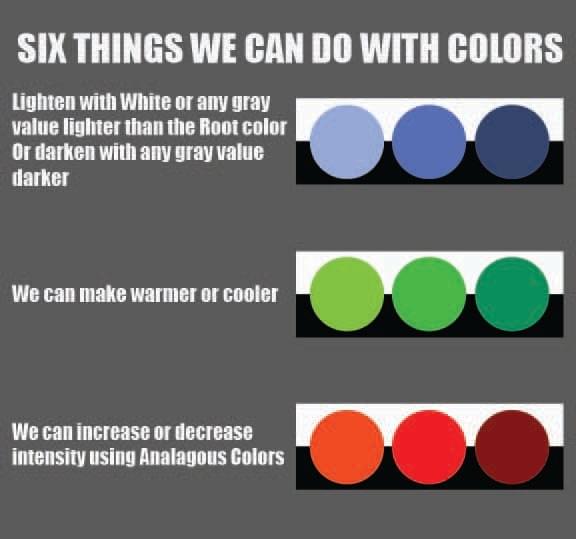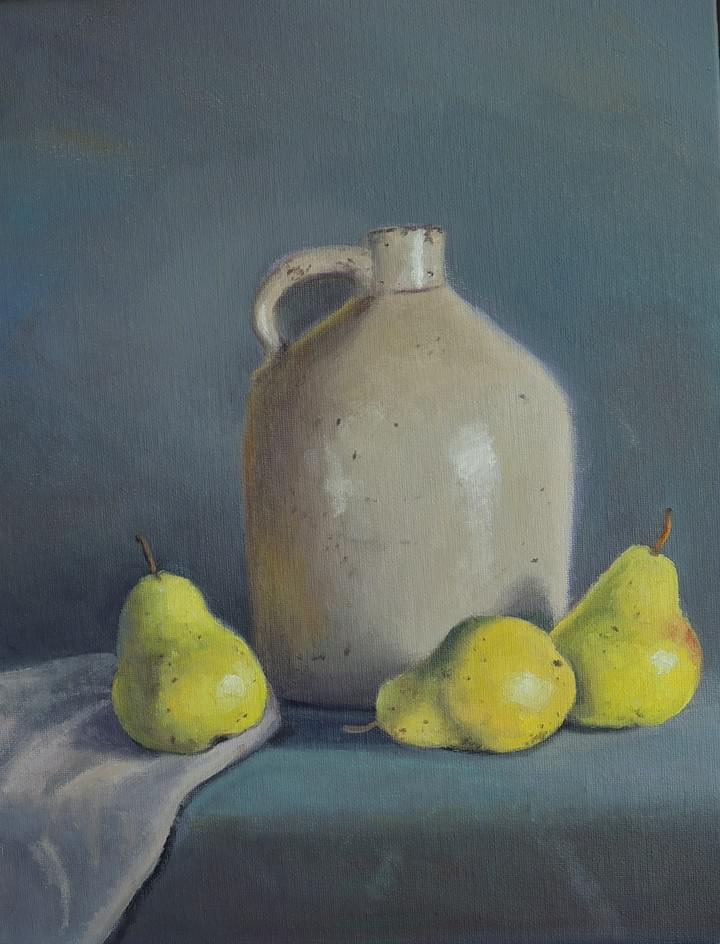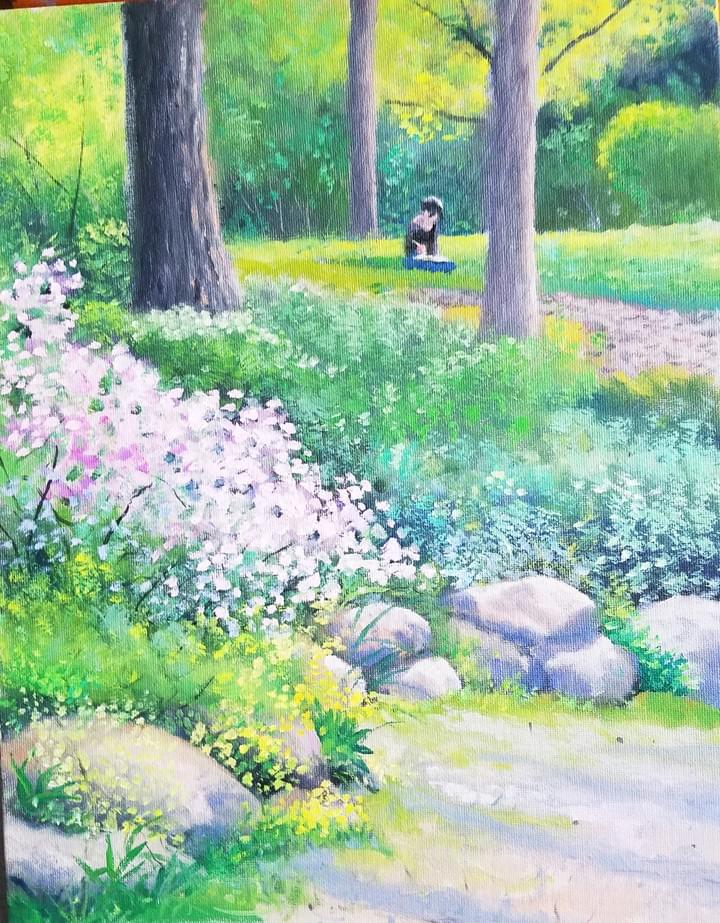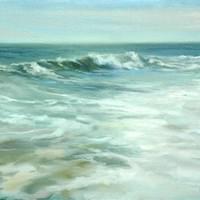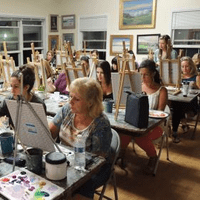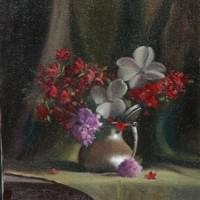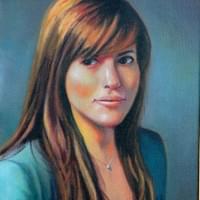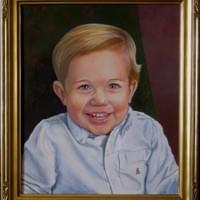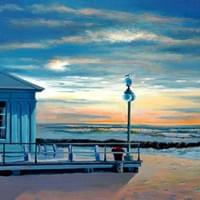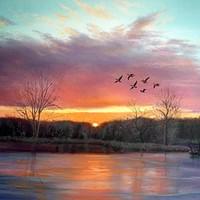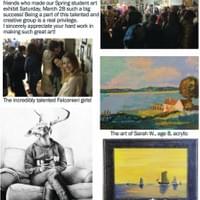

- HOME
- SUMMER ART CAMP
- SUMMER PAINT & SIP
- SEASCAPE/LIVE MUSIC
- ABOUT US
- FALL SCHEDULE
- SUMMER SCHEDULE
- CURRICULUM
- Spring Music/Art Demo
- MEET THE INSTRUCTORS
- OPEN STUDIO
- PAINT MATERIALS
- NEWSLETTER
- NEWSLETTER ARCHIVES
- ARTICLES
- UKRAINE FUNDRAISER
- ART EXHIBIT 2021
- MIKE'S ART
- SAFETY GUIDELINES
- PRICES & POLICIES
- REGISTER ONLINE
- Waugh
- Loomis
- FREE ART VIDEOS
- CONTACT
- Galleryhide
- Gallery2


Dear Parent,
Summer’s here and we wish you and your family a fun and relaxing season!
I want to thank you for the opportunity to share my passion for art with your child!
I'm in awe of the incredible talent out there and grateful you chose Creators Workshop art school as an outlet for their creativity.
Classes will continue till Friday, June 28th. We will close for a short break over 4th of July week,
June 29th thru July 5th. Our Summer session is as follows,
Children & Teens
Tuesday 11 am - 12:30 6 -7:30 pm, Friday 4 -5:30 pm, Saturday 10 am-11:30 am
Adults & Teens
Thurs. 7-9:30 pm Fri. 9:30 am - 12 pm Sat. 11:30 - 1:30 pm
If signing up for the full month conflicts with your Summer schedule, your child is welcome toattend individual classes at any of the times above. Classes are $40 each.
Along with our class schedule, we're pleased to offer our 18th annual Summer art camps.
Date and times for the Summer Art Camps are July 15-19 or August 12-16.
Camps are filling so sign up today! You can learn more at the SUMMER ART CAMP link
Our Summer schedule ends August 30th. The school will be closed Sat. Aug. 31st and re-open Tues. Sept. 3rd. You can register anytime
I invite you to sign up for our free newsletter!
Everything that's new and news at the Creators Workshop! Absolutely free! CLICK HERE
To a creative Summer,
Michael Malzone
If you're looking for a fun and creative Summer camp for your child, look no further!
Creators Workshop art school located in Wayne, presents five fun days of painting, drawing, and cartooning for young artists of all ages.
Click the link below to claim your spot now!
Recommended ages: 6-16
All art materials included
Price: $350
(Lunch not included)
Camp hours: 10 am – 2 pm
Limited to 20 student on a first come, first serve basis No Refunds
At: Creators Workshop 21 Pompton plains crossroad, Wayne, NJ
973-720-0001
Mikemalzone@gmail.com

You're invited to join your hosts Mora Monae and Cookie Doe along with friends for a fun night of incredible dancing and painting!
In the spirit of the Summer, together we'll create an 11"x14" painting of the jersey shore you'll truly be proud to take home.
Cost is $50 per person, includes all materials.
Limited to 24 attendees on a first come, first serve basis. No Refunds

ABOUT US
When the artist is alive in any person ... he becomes an inventive, searching, daring, self-expressing creature. He becomes interesting to other people. He disturbs, upsets, enlightens, and he opens ways for better understanding.
-Robert Henri

Now in our 22nd year, the Creators Workshop offers fine art instruction for children and adults. Our school is founded on the principle of offering students a fine art education in a professional, working studio environment. Under the tutelage of owner/instructor Michael Malzone and excellent art instructors, students are taught classic traditional techniques in drawing and painting, and in which they can learn, practice and develop their skills. Whether the student aspires to a career in art or just for enjoyment, our goal is to make the art of art instruction a fun and enriching experience.

About Michael Malzone
Artist/Instructor/Owner
Mike Malzone has been an artist for over 30 years. As a painter and illustrator, his artwork has appeared in magazines, newspapers, greeting cards, and sportswear. His original paintings and prints are sold in galleries and through his studio. His artwork has exhibited in many regional shows including the Hudson Valley Art Association, American Professional Artists League, Salmagundi Club, NY., National Arts Club, NY Lambert Castle Museum, Dey Mansion, and many others.
FALL SCHEDULE 2024
Children, Teens, & Adults
CLICK TO REGISTER CHILDREN & TEENS
Class size is limited to 18 students per session
TUESDAY (Children & teens)
PAINTING & DRAWING
4:00 pm - 5:30 pmTUESDAY (Children & teens)
6:00 pm - 7:30
FRIDAY (Children & teens)
PAINTING & DRAWING
4:00 pm - 5:30 pmSATURDAY (Children & teens)
Painting & Drawing
10 am - 11:30 amADULT SCHEDULE
Class size is limited to 15 students per session
THURSDAY
PAINTING & DRAWING
7:00 pm -9:30 pmFRIDAY
PAINTING & DRAWING
9:30 am - 12:00 pmSATURDAY
Painting & Drawing
11:30 am - 1:30 pmSUMMER SCHEDULE 2024
Children & Adults
Class size is limited to 18 students per session
TUESDAY (Children & teens)
PAINTING & DRAWING
11:00 am - 12:30 pmTUESDAY (Children & teens)
6:00 pm - 7:30
FRIDAY (Children & teens)
PAINTING & DRAWING
4:00 pm - 5:30 pmSATURDAY (Children & teens)
Painting & Drawing
10 am - 11:30 amCLICK HERE TO REGISTER
ADULT SCHEDULE
Class size is limited to 15 students per session
THURSDAY
PAINTING & DRAWING
7:00 pm -9:30 pmFRIDAY
PAINTING & DRAWING
9:30 am - 12:00 pmSATURDAY
Painting & Drawing
11:30 am - 1:30 pmCLICK HERE TO REGISTER
CURRICULUM
What you'll learn at the Creators Workshop

Fine Art Instruction....
The Creators Workshop Way!
DRAWING & PAINTING
Drawing
We are enhancing are drawing and painting classes with more serious methods of studies.
Our drawing classes incorporate a modified version of the classical drawing course formulated by Jean-Léon Gérôme and Charles Bargue in the late 1800's, one of the most influential art-education programs in the world. From Paris to London to New York, major museums and art schools used the course. Students from Diego Rivera, Pablo Picasso, Vincent van Gogh and hundreds of other art students spent weeks and months making exact copies of the lithographs of plaster casts, great master drawings, and life drawings.
Many great art schools and ateliers around the US today still utilize the Bargue method and are rediscovering its value to the aspiring artist.
I have come to the opinion as a private art instructor that despite the innovation in graphics and photography due to technology and computers, artists still need to draw! That's our job, to provide our students with great classical, traditional drawing skills, and enjoying the process.
Traditional representational painting in Acrylics, Oils, & Watercolors
The title sounds stuffy, but that's what we've been successfully teaching our students the past twenty years. A very sound method and approach to painting, based on the nineteenth-century ateliers and studios. Our goal is to impart a deep understanding of the guiding principles of painting, understanding of tonal values and the nature of light and how we perceive it. Through the study of landscape, seascape, still life, and portraits, the art student explores the skills of composition, an understanding of color, the prismatic palette, and methods and materials of executing a successful painting. Our approach to color and our palette is based on the Munsell color system combined with the prismatic palette passed down from Frank Vincent Dumond, which was taught at the Art Students League. Using the Munsell system puts our students light years ahead of other art school methods and through practice, any artist can attain any color in color space using this method. Dumond's palette breaks down the Munsell system making it applicable to painting any subject matter. Pretty exciting stuff!Meet Our Instructors
Creators Workshop is proud to have some of the most talented young artists in the area to work with our students.

Ms. Amanda
It is a real privilege to have Ms. Amanda a part of the Creators Workshop for over ten years. A Monmouth College graduate, Ms. Amanda teaches art in the Waldwick school system

Ms. Sophia
Sophia came to our school three years ago as a student and continues to study with us along with teaching on the weekend. A student of Wayne Hills, Sophia recently got accepted into Pratt Institute. Sophia certainly has a bright future in art.

Ms. Amber
Ms. Amber really makes Creators Workshop a great place to study art with her talent and dedication to our young students. Amber attends Pequannock H.S. where she is preparing for a career in industrial design.

Ms. Molly
We are elated to have Ms. Molly with us at our school. Molly joined us in late Spring, 2o22. Extremely talented, Molly is attending Montclair State College majoring in art education.

Mr. Mike
Michael Malzone has been a professional artist for over thirty years as a painter and illustrator.
His illustrations has appeared on greeting cards, magazines, newspapers and sportswear. His original oil paintings and reproductions are sold in galleries, frame shops, and also available in his studio/gallery.
The owner/instructor of the Creators Workshop Art School located in Wayne, NJ, Mike teaches painting, drawing, and cartooning to over 100 children and adults weekly. He started the school in 2001 and 23 years laters he continues to share his passion for art.
His artwork has exhibited in many regional shows including the Salmagundi Club, NY, National Arts Club,NY, Lyme Art Assoc.,CT Ridgewood Art Institute, NJ,
Memberships include the Hudson Valley Art Association

Creators Workshop Art School is proud to present an "Open Studio" Tuesday, 11- 3 pm starting March 12th. This is an open invitation to artists at any level to continue to practice their craft in a professional art environment. (no instruction)
Painting or Drawing.
Studio time is $20 monthly or $5 per class.
You can pay with credit card upon submitting registration or Venmo at: @Michael-Malzone-1
No Refunds

RECOMMENDED TOOLS AND MATERIALS
(The pigment choices and most materials except paint thinner and linseed oil can be used for oils & acrylics.)
This list is based solely on my own preference and materials that have served me well over the many years painting a variety of subject matter. As an art teacher I'm often asked to supply a materials list something I'm happy to do and to share here with you but I must preface this by stating these materials work for me! For instance, if you paint hyper-realism or abstract my choice in brushes and paints might not work for you. If you want a limited palette then my paint choices based on the prismatic palette may not work for you also. Let's give it a shot!
Palette, Linseed Oil*, Odorless paint thinner*, Pigments, Palette knife, Brushes, Canvas, Paper towels or rags *not necessary with acrylics.
PALETTE
There are quite a few styles out there: Masterson's Sta-Wet palettes are made of lightweight white plastic that cleans up easily. The Palette Seal is airtight when closed and paints last longer
Palette paper can be taped inside and can make clean up much easier.
The best is homemade. Go to your local hardware store and purchase the thickest glass available. recommended size; 14x18 or 16x20. Paint one side with a light gray acrylic coating and you have an excellent palette at 1/2 the price. A thick glass works better and cleans up nicely but you have to tape up the edges to avoid getting cut.
I prefer a gray palette surface in which I tone my canvas the same value. The white canvas and palette can make it difficult to read values correctly and since many subject matter falls somewhere on the gray scale, it helps get you closer to getting those values correct. Again this is solely subjective and if you prefer working directly on white, go for it.
Recommended Pigments
My palette is based on the prismatic palette organized by Frank Vincent Dumond who taught it to his students at the Art Students League. Many instructors passed it down to their students, some modified but mostly true to the original palette. My palette is also influenced by the Munsell color system.
When I lay out my palette I'll mix out a gray scale of 9 mixtures from light to dark. When painting outdoors I'll also mix out a string of greens and a mixture of cobalt blue. ( You can mix out a string of Ultramarine blue in place of Cobalt blue.
Here is my recommended list of pigments for oils and acrylics. I personally use Gamblin, Colors brand. Windsor & Newton is fine and widely available in most stores. Golden brand is an excellent acrylic but lquitex and Winsor Newton are great brands as well. The key is to have a palette of paints that are consistent in quality and in availability since they vary in color from brand to brand. It's always good to experiment but you should settle in with colors you're comfortable with.
PIGMENTS
Titanium White
Ivory Black
Cadmium Lemon yellow
Cadmium Orange
Napthol Red
Quinacridone Magenta
Dioxyzine Purple
Ultramarine Blue
Cobalt Blue
Pthalo Turquoise
Pthalo green
Yellow Ochre
CANVAS
Avoid generic and store (economy) brands when possible. They're barely gesso'ed and don't offer a desirable painting surface.
Cotton is much less expensive than linen, and has become the more popular support for oil and acrylic painting. A properly prepared cotton canvas has longevity similar to linen, and is more flexible and easier to stretch properly. Polyester has become popular lately for it's durability and resistance to changes do to extreme temperatures.
Regarding stretched canvas or panels, I've been using quality canvas boards for plein air paintings and smaller size canvases. Aluminum is probably the most archival but can be costly.
BRUSHES
I recommend Robert Simmons brand, simply because they are a good quality value for your money. They also make an economy line called "Simply Simmons". I also liek Kolibri brushes, made in Germany and available at www.Naturalpigments.com
I recommend Flats and Filberts as they are excellent all-utility brushes. Sizes should include 2, 4, 6, 8, 10, 12, 14, 16. (Most but not all brushmakers conform to the same standard in brush sizes).
Now the purists might disagree with me here but I found cheap Amzon or "Michaels" brand brushes can get the job done as well as their expensive counterparts! We have these inexpensive small student brushes in our school and I love the really small ones for details in portraits, tree branches, and those little squiggly lines in waves. And as long as I'm confessing, I love hardware store house paint brushes for laying in big areas on larger canvases.
PAPER TOWELS & RAGS
I recommend old t-shirts or cotton rags over paper towels. The fibers from the paper towels can get in your brushes and eventually end up on your canvas. Also you can get a lot more use out of rags which makes them more environmentally friendly. Be sure to dispose of rags and paper towels in a safe paint can and be sure to dispose of daily.
SOME PERSONAL NOTES:
- When buying colors, always avoid Hues. They're cheaper but they have less color pigment which makes color mixing inaccurate.
- Don't skimp. Buy the best materials and tools you can afford, as they will make the painting experience more enjoyable and will pay for themselves in the long run.
-A French Easel A great investment, the french easel combines a sketchbox, easel, and canvas carrier in one, necessary for location and perfect for transporting your materials back and forth.
Creators Workshop Newsletter
Art Instruction, Thoughts, and Random Musings of an Artist. Publishes every week, Absolutely Free!
Check out our Archives for hundreds of past newsletters filled with instructions and interesting articles. CLICK HERE
Visit our Newsletter Library!
NEWSLETTER ARCHIVES
CW Newsletter Articles 2023
The Creators Workshop is pleased to present a series of articles by art contributor Elizabeth Tiernan. Originally created for our newsletter, I've posted them here for you to enjoy.
Add paragraph text here.
The Hudson River School: Birth of The Great American Landscape

The Hudson River School: Birth of The Great American Landscape
by Elizabeth Tiernan
In the mid-1800s, a group of artists dramatically changed the direction of landscape painting with their images of the wildly untamed Hudson River valley in New York. This group became known as the Hudson River School, although they were neither part of an actual school nor a formal art movement. While European artists of the time were producing more traditional paintings, these artists were inspired by the natural beauty of America’s undeveloped countryside.
Humble Beginnings
Prior to the emergence of the Hudson River School, many American painters preferred the style and subject matter of the more traditional European artists. Landscapes were not considered important subject matter for professional artists at the time. The Hudson River artists, however, saw incredible possibilities in the vast expanses of undeveloped American terrain. Many of these artists created their sketches outdoors then completed their paintings indoors in their art studios.
The Hudson River School landscape style was initially influenced by the Romanticism movement that was happening in Europe, and their mission was to convey the beauty of America’s countryside. Their paintings embraced the concept of the sublime, which was a key theme in the art of the Romanticism era. The sublime placed a great emphasis on evoking strong emotions and less importance on photo-realistic representations.
Like most artistic styles that were not named until many years after their artwork was created, the group of American painters did not receive the name of Hudson River School until many years after the style fell out of favor. The source of the name is not confirmed, but it was generally understood to have a somewhat negative connotation, implying that landscape paintings did not have universal appeal and were not appropriate subjects for serious artists.
An Overnight Success
The earliest of the Hudson River School paintings were created by Thomas Doughty who was one of the first artists to create paintings of the Hudson River valley. But the group’s most celebrated artist was Thomas Cole. Cole had no formal art training when he first began creating sketches of the Catskill Mountains. His style of combining the concepts of realism and idealism was quite original at the time. At the start of his career, he completed 3 small paintings of his landscapes and displayed them in a bookshop in New York City where they attracted the attention of three more established artists. John Trumbull, William Dunlap and Asher Durand were impressed with Cole’s unique style and helped launch the young artist’s career by bringing widespread attention to his work.
Cole became an instant success virtually overnight and later gained recognition as the founder of the Hudson River School. The paintings he created were often praised not only for their expertly rendered details, but also for conveying both the beauty of the untamed land and the promise of modern development. Over the course of his career, Cole trained only one student; a young artist named Frederic Church. Church learned well under Cole’s guidance and eventually found success as a member of the second generation of Hudson River School artists.
Other artists of the Hudson River School hoped to find the same success as Cole, and they began creating paintings in areas around upstate New York. Their technique was similar to Cole’s, sketching on site in pencil and paint and finishing their paintings indoors in their studios. The resulting paintings were often composites depicting a more idealized scene than a realistic rendering of the landscape as it naturally appeared. This was done with the intention of drawing powerful emotions from viewers, as if to overwhelm them with the beauty of nature.
Asher Durand, one of the artists who discovered Thomas Cole’s work in the shop window, was strongly influenced by the British Romanticist painter John Constable. Constable painted directly from the outdoor scene in front of him, rather than returning to his studio to develop his paintings as Cole had done. Durand became a close friend of Cole’s and after Cole died in 1848, he took over as the leader of the Hudson River School. Under Durand’s guidance, the Hudson River artists gradually began to favor a more naturalistic approach to their paintings.
The Second Generation
The second generation of the Hudson River School included artists Albert Bierstadt, John Frederick Kensett, and Thomas Cole’s protégé, Frederic Church. These artists were strongly influenced by the style and process of the original Hudson River painters, but they wanted to expand into different areas of America. Both Church and Bierstadt became very well known. Church began exploring in South America, while Bierstadt focused on the terrain of the Western states. Their canvases were typically quite large and featured composite scenes, created to show panoramic views of the wilderness. Church, like his instructor Thomas Cole, made many sketches outdoors at his chosen locations, and developed them in his studio into large, imposing canvases. Bierstadt took many photographs while on location near the Rocky Mountains which he later used to develop his paintings. Through his work in this area, he became known as “The Painter of the West.”
Light, Water and the Rocky Mountains
While Church and Bierstadt brought their passion for landscape painting to new locations, John Frederick Kensett decided to take his landscapes in a new direction. He began working to develop a style which later became known as Luminism. His landscapes were studies of light upon water, and he returned to paint the same locations multiple times. Kensett’s canvases were smaller than those of his other Hudson River colleagues and were a significant departure from the large composite scenes of those other artists. The Luminist style he favored featured softer, less-defined brushstrokes that in some ways resembled paintings in the Impressionist style. Kensett enjoyed helping to promote other artists and was one of the founders of the Metropolitan Museum of Art in New York City.
In the 1860s, three other artists, Thomas Moran, William Keith and Thomas Hill, joined Bierstadt in his focus on the American West. They eventually became known as the Rocky Mountain School. The large composite paintings of these artists captured the hope and promise of western expansion into the wild and unmarred terrain. It was not uncommon for these artists to join expeditions into areas like the Rocky Mountains, the Grand Canyon and the land that was later to become Yellowstone National Park.
The Father of American Landscape Painting
George Inness created his best-known paintings during the later years of the Hudson River School. He was often described as “the father of American landscape painting.” As a young man, Inness studied briefly under French painter Regis Francois Gignoux, who instilled in him the lessons of the Old Masters. Inness also studied the work of Thomas Cole and Asher Durand and began to consider the possibility of combining the styles of the two artists.
Inness made multiple trips to Europe over several decades, influenced by the Old Masters and several prominent European painters but he identified more with the emerging Barbizon School of painters. The American Barbizon art movement, along with the Impressionists, began to gain popularity as the Hudson River School’s style lost momentum. The Barbizon style included darker tones and looser brush strokes than those used in the Hudson River School paintings.
The process Inness developed to create his paintings involved observing the landscape before him and making detailed sketches of individual elements, but not of the scene as a whole. Once he returned to his studio, he blended all the pieces together into a finished landscape.
The Legacy of the Hudson River School
By the late 1800s, the popularity of the Hudson River School style of painting began to fade. Some critics dismissed the style as “historic” and praised the newer ideas ushered in by the Barbizon School and the American Impressionists. However, the Hudson River School artists left a lasting impression on generations of painters who came after them. Later artists have recognized the Hudson River School’s enormous contribution to the development of American landscape painting.
Many examples of the Hudson River School paintings can be seen in museums in New York, Washington D.C., and around the nation. Frederic Church’s former home, known as Olana State Historic Park, offers tours of his estate and a museum. The museum displays both Church’s art and the work of contemporary artists that were inspired by the Hudson River School.
Olana State Historic Park https://www.olana.org/
Fans of the Hudson River School can also visit Thomas Cole’s home and art studio at The Thomas Cole National Historic Site in Catskill, NY, where his paintings and sketches are on display. This site also sponsors The Hudson River School Art Trail, a series of hiking and paddling excursions where participants can experience first-hand views of the glorious landscapes that were the inspiration of the Hudson River School paintings.
Thomas Cole National Historic Site https://thomascole.org/
The Hudson River School Art Trail https://thomascole.org/hudson-river-school-art-trail-guided-hikes/

The Language of Color:
An Inside Look at Color Psychology
Part one of a three-part series
CLICK HERE
Beyond the Color Wheel:
Artists Who Challenged the Conventions of Color Theory
Part two of a three-part series
CLICK HERE
MIKE'S ART
You can see more of Mike's art at www.Michaelmalzone.com
About the artist Michael Malzone
Michael Malzone has been a professional artist for over thirty five years as a painter and illustrator.
His illustrations has appeared on greeting cards, magazines, newspapers and sportswear. His original oil paintings and reproductions are sold in galleries, frame shops, and available in his studio/gallery.
Malzone is the owner/instructor of the Creators Workshop Art School located in Wayne, NJ where he teaches painting, drawing, and cartooning to over 100 children and adults weekly.
His artwork has exhibited in many regional shows including the Salmagundi Club, NY, National Arts Club,NY, Lyme Art Assoc.,CT Ridgewood Art Institute, NJ,
Memberships include the Hudson Valley Art Association.
PRICES & POLICIES
REGISTRATION INFORMATION FOR OUR 2020 SESSION
Registration & Payment policies
Payment: $120 per month,(Classes are weekly)
$40 per individual class
Payments are due on the 1st of the month.
10% Discount - 4 Month Prepaid- $432.00 (ask for details)Please make checks payable to: Creators Workshop LLC
Mail to: Creators Workshop 21 Pompton Plains Crossroads, Wayne, NJ 07470
Credit card payments accepted at studio & online at: www.Creatorsworkshop.comRegistration
The Creators Workshops requires registrations using the enrollment forms available at the studio or online at www.Creatorsworkshop.com Creators Workshop does not accept registration for art classes over the phone.
- Registrations are processed in the order in which they are received. Class enrollment is on a first-come, first-served basis.
- Creators Workshop reserves the right to refuse admission or dismiss any student due to inappropriate behavior.
- Registration is complete when Creators Workshop is in receipt of full payment.
- Students enrolling after the first week will have tuition pro-rated for classes not attended.Materials and Supplies
Students are responsible for supplying their own materials in both painting & drawing classes.We have complete acrylic paint kits available for sale at our school. See ART STORE
For additional questions, see Mike
Make Up Classes
Missed classes can be made within the month or the following month in which the class was missed.
Classes can be made up in an alternative class time at the instructors discretion
Classes missed cannot be credited to the next month.Refunds for Children & Adult Classes
Since Creators Workshop does not require long term session payments, we do not offer refunds.
Transfers
Students may transfer to any class not already filled.
Weather
Creators Workshop will close for snow and inclement weather at our discretion. We will post closings on our website at: www.Creatorsworkshop.com two hours before class time
Lost property
Creators Workshop is not responsible for artwork and other property left on the premises, and has no liability if such property is lost or stolen. Any property or artwork left behind after six months will be discarded
Gift Certificates
Gift certificates are a great gift for birthdays, holidays, or any occasion! You can purchase one class or a month. See Mike
Photography
Creators Workshop will occasionally document classes and student work using photography and video for promotional purposes only. If you do not want yourself, your child, or your artwork photographed, please notify us in writing or e-mail at mikemalzone@gmail.comFrederick Waugh, America's Greatest Seascape Painter
You can feel the pounding of the surf and the smell the salty air with almost every one of his paintings.
Frederick Waugh is widely considered America's greatest and most popular marine painter. A fellow Garden Stater at birth, Waugh was born in Bordentown in 1861, but his quest for painting waves against a rocky coastline took him all around the world, creating a body of work unsurpassed by any other seascape artist to this day. Many years ago I came into possession of an "American Artist" magazine, with a great article on Frederick Waugh by George R. Havens, dated 1969.I'm excited to share this wonderful read with you and whether you like seascape painting or not, this an excellent primer for the painter at any level.....Enjoy
Free Art Videos
Check out our new art instructional videos! Whether it's landscapes, seascapes, or still life, you'll find a lesson for you, for children and adults. And the best..they're absolutely free!
Click the links below for our free instructional videos, or you can visit our Creators Workshop Youtube playlist, CLICK HERE





Paint "Old Barney" Barnegat Lighthouse Paint Tutorial
Demo part 1 Click here
Demo part 2 Click here
Demo part 3 Click here
Demo part 4 Click here
Demo part 5 Click here
Demo part 6 Click here
Demo part 7 Click here
Demo part 8 Click here
Demo part 9 Click here
Demo part 10 Click here
Demo part 11 Click here

Painting the Skylands Botanical Gardens Paint Tutorial
Demo part 1 Click here
Demo part 3 Click here
Demo part 4 Click here
Demo part 5 Click here
Demo part 6 Click here
Demo part 7 Click here
Demo part 8 Click here


Painting Oranges Part 1 CLICK HERE
Painting Oranges Part 2 CLICK HERE
Painting Oranges Part 3 CLICK HERE

A Simple Landscape Part 1
A Simple Landscape Part 2
A Simple Landscape Part 3
A Simple Landscape Part 4

Paint the Sea Part 1
Paint the Sea Part 2
Paint the Sea Part 3
Paint the Sea Part 4
Paint the Sea Part 5
Paint the Sea Part 6

A short, simple pear demo to demonstrate basic lights and darks
Pear Demo part 1 Click here
Pear Demo part 2 Click here
Pear Demo part 3 Click here

Tree Demo Painting
Demo part 1 Click here
Demo part 2 Click here
Demo part 3 Click here
Demo part 4 Click here
Demo part 5 Click here
Demo part 6 Click here
Demo part 7 Click here
Demo part 8 Click here

Sailing on Greenwood Lake
Paint Tutorial
Demo part 1 Click here
Demo part 2 Click here
Demo part 3 Click here
Demo part 4 Click here
Demo part 5 Click here

Pears & Jug Still Life
Paint Tutorial
Demo part 1 Click here
Demo part 2 Click here
Demo part 3 Click here
Demo part 4 Click here
Demo part 5 Click here
Demo part 6 Click here

Painting in Laurelwood Gardens, Thursday 5/7/2020, 11" x 14" Oil on canvas panel, "The Artist"
Click Here to view the painting process

A Pond In The Woods 11" x 14" Oil on canvas panel
Demo part 1 Click Here
Demo part 2 Click Here
Demo part 3 Click Here
Demo part 4 Click Here
Gallery
Photos & videos from our travels.
About Us
Our Mission
We're Hiring!
Resources
Tutorials
Brand Assets
Contact Us
321-555-5555
info@
© 2015
















